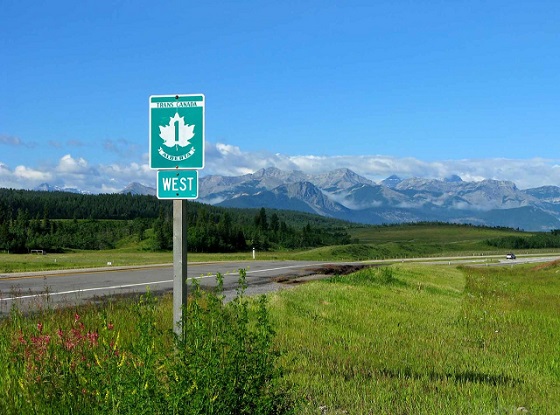Alberta
Alberta deserves a police force that actually reflects its values

This article supplied by Troy Media.
The RCMP answers to Ottawa, not Albertans. A provincial police force is the only solution
The recent comments from RCMP Staff Sergeant Camille Habel, who decried traditional values as a path to extremism, should be fuel for every Albertan committed to building a provincial police force that truly reflects our values, not Ottawa’s vision of what we should become.
Habel’s statement, framing beliefs rooted in community and local culture as potentially dangerous, highlights a growing disconnect between
the RCMP and the values that Albertans hold dear. This underscores the urgent need for a police force that is accountable to our province and its distinct way of life.
Alberta has witnessed troubling patterns of RCMP overreach—from door-kicking in Fort McMurray to aggressive tactics during the 2013 floods in High River to politically charged allegations against the Coutts Four. These aren’t isolated incidents but symptoms of an institution that has become increasingly disconnected from Alberta’s unique needs. The RCMP, which answers to Ottawa rather than the provincial government, has strayed from the values it was once founded to protect.
The RCMP wasn’t always like this. Originally a force with deep Western roots, it was created to maintain peace in a vast and rugged frontier. Today, however, the RCMP is centralist, politicized, and increasingly at odds with the values it once upheld.
This is why creating an Alberta Provincial Police (APP) isn’t just symbolic. It’s a constitutional right under Section 92 of the Constitution Act,
1867, already exercised by Quebec and Ontario. Alberta can—and should—do the same. A provincial police force would be accountable to the province, reflect local values, and serve Albertans’ unique needs rather than those of Ottawa.
But we must be clear: geography alone won’t solve the problem. If the new force carries the same institutional DNA as the RCMP, it will still lack the local understanding and trust that Albertans deserve.
The case of Jeremia and Dominic Leussink five years ago shows what’s at stake. The brothers, farmers near Didsbury, were going about their business when 18-year-old Jeremia, after a 16-hour shift, drove a tractor through a ditch into a police checkstop—normal in rural practice. The Alberta Sheriffs didn’t show restraint. They dragged him from the tractor, slammed him to the ground, and punched him in the neck and face. Dominic, who arrived later, was arrested trying to protect the equipment. The charges were eventually dropped but not before severe damage was done.
Alberta is not a generic province. Our motto, “strong and free,” is more than branding. We value private property as the cornerstone of liberty, and we cherish freedoms—of speech, worship, association, and dissent. These values are essential to life in this province, not ornamental. In contrast, the Canadian Charter of Rights and Freedoms omits property rights, reflecting a more centralized, Laurentian worldview. This ideological divide between Alberta and the federal government underscores the need for a police force that aligns with our values.
Habel’s remarks, labelling “traditional values” as a path to extremism, are not fringe—they reflect the growing establishment perspective. This shift directly impacts policing in Alberta, creating an urgent need for reform.
To chart a different course, Alberta’s police force must be trained differently. It must instill core virtues at the ground level.
First, Alberta’s police force must consist of officers who not only patrol the land but belong to it. Second, training must focus on independent judgment, not rote compliance. Third, the force must pursue real crime, not ideological ghosts. Fourth, it must be accountable to Albertans, not bureaucratic fads or external frameworks. Finally, it must protect Alberta’s culture: our commitment to freedom, property rights, and a government that serves, rather than rules, its citizens.
Alberta cannot afford to send officers to federal academies that instill a diluted worldview. A curriculum rooted in Alberta’s culture and history is essential. It will form the foundation of a legitimate provincial force. The Ministry of Public Safety must prioritize establishing the right institutional DNA.
We aren’t alone in facing these challenges. The Texas Rangers, though not perfect, offer a valuable comparison. Historically, they were embedded in the culture they served, answering to Texans, not federal fashions. Their authority came from the land upward, not from bureaucratic command downward.
Their ethos, captured in the saying “One riot, one Ranger,” was about competence, courage, and direct accountability—not swagger. They didn’t just enforce the law; they protected a way of life because they were part of it.
That’s the institutional culture Alberta must create: one where policing defends community, liberty, and order—not a tool of political engineering designed elsewhere. We need a police force that serves Alberta first, not a bureaucracy in a new uniform.
If done right, the Alberta Provincial Police will serve as a shield against federal overreach, cultural drift, and the creeping conformism of federal institutions. If done poorly, it will be the modern RCMP in a fresh uniform—still top-down, still alien, still suspect.
Alberta cannot afford to get this wrong. This is our moment to define a police force that works for us—rooted in our values and accountable to our people. Anything less would be a missed opportunity.
Marco Navarro-Genie is vice-president of research at the Frontier Centre for Public Policy and co-author, with Barry Cooper, of Canada’s COVID: The Story of a Pandemic Moral Panic (2023).
Troy Media empowers Canadian community news outlets by providing independent, insightful analysis and commentary. Our mission is to support local media in helping Canadians stay informed and engaged by delivering reliable content that strengthens community connections and deepens understanding across the country
Alberta
Tell the Province what you think about 120 km/h speed limit on divided highways

Alberta’s government is engaging with Albertans on increasing speed limits on rural highways.
Starting Nov. 7, Albertans can share their views on modernizing speed limits on divided highways through an online survey running until Dec. 12. The survey will ask how Albertans view raising the speed limit by 10 km/h on various highways from 110 km/h to 120 km/h.
“Alberta’s government is investigating how to safely increase speed limits on divided highways, and if Albertans support increasing speed limits. We are investing more than $1.5 billion this year alone to improve highway safety and upgrade infrastructure across the province. We want Albertans to be able to drive the speed limit that the highways are designed for. Modern vehicles combined with public awareness mean we can explore higher speed limits.”
The survey will provide Albertans with the opportunity to provide input on which highways they would prioritize having a speed limit increase, their views on restricting commercial trucks from using the far-left lane on highways with three or more lanes and any other feedback that would improve driving experiences on provincial highways.
Following a review of the survey results, Alberta’s government plans to conduct a mini-trial of a 120 km/h speed limit to assess the impacts of higher speed limits on divided highways. The trial will include strong monitoring to assess driving behaviour.
Alberta’s government reminds motorists to slow down and drive to the conditions. Speed limits are set for ideal conditions. When roads are wet, icy or when there is reduced visibility, motorists should slow down.
Quick facts
- Alberta’s provincial highway network includes more than 64,000 lane kilometres of highways, about 11,700 lane kilometres of which are divided.
- The posted speed limits of Alberta’s divided highways range from 100 to 110 km/h, although the posted speed limits on segments passing through cities, towns and First Nation lands can be as low as 50 km/h due to factors such as signalized intersections, pedestrians and local access.
Related information
- The survey is available online.
Alberta
Alberta Announces Members of Class Size and Complexity Committee

A new Class Size and Complexity Cabinet Committee has been struck to address classroom challenges.
Taking action on class size and complexity
Classrooms in Alberta continue to grow and are becoming increasingly complex, and immediate action is needed to address these issues in the public education system. To meet these issues head on, the Class Size and Complexity Cabinet Committee has been created. The cabinet committee will help guide government policy and deploy resources to deal with class sizes and classroom complexity.
“We are committed to providing world-class education, and we’re building schools and funding education at a rate unprecedented in this province. This committee will help us address the concerns of teachers, parents and students around class sizes and complexity.”
Throughout November, Alberta’s government will continue work with school boards to collect data on class sizes and classroom composition. The cabinet committee will use this data to direct resources to the classrooms that need it the most. Starting in January, this data will be made available and released annually.
The Class Size and Complexity Cabinet Committee will be co-chaired by the Premier of Alberta and the Minister of Education and Childcare. It will also include non-voting members representing school boards, administrators and a teacher representative of the ATA. The committee will also hear from school boards, academic experts, teachers, educational assistants, complex needs specialists and parents to inform its decisions and guide this vital work.
“We heard teacher concerns, and we are providing solutions. The Class Size and Complexity Cabinet Committee will help us take immediate action and ensure teachers and students are given the support they need to succeed.”
In June 2025, Alberta’s government established the Aggression and Complexity in Schools Action Team to provide advice on addressing classroom complexity. The report has been received and will be released soon. Over the coming months, the cabinet committee will start rolling out solutions informed by the action team’s recommendations. In addition, the committee will guide the creation of a new inclusive education policy framework.
“The work of this committee will support teachers in responding to the growing complexity in our classrooms. We will ensure that the voices of the contributors to the initial work guide
solutions that truly improve the educational experience for students and the educators who serve them.”
“I appreciate the government’s recognition of the impact of classroom complexity and their commitment to working collaboratively for improvement. Supporting teachers ultimately improves classroom conditions and student outcomes.”
Using data collected, this cabinet committee will also guide Alberta’s government in executing its commitment to hire 3,000 new teachers and 1,500 new educational assistants over the next three years. They will also assist in identifying and prioritizing where new schools and modulars should be built, advancing the government’s commitment to invest $8.6 billion to build 130 new schools, and provide 109 modular classrooms in the growing communities that need them urgently.
Quick facts
- Members of the Class Size and Complexity Cabinet Committee include:
- Danielle Smith, Premier of Alberta
- Demetrios Nicolaides, Minister of Education and Childcare
- Jason Nixon, Minister of Assisted Living and Social Services
- Rick Wilson, Minister of Mental Health and Addiction
- Searle Turton, Minister of Child and Family Services
- Lynnette Anderson, chief superintendent, Edmonton Catholic Schools
- Nicole Buchanan, chair, Red Deer Public Schools
- Marilyn Dennis, former president of Alberta School Boards Association
- Mike McMann, superintendent, Fort Vermilion Schools and President, College of Alberta School Superintendents
- Joanne Pitman, chief superintendent, Calgary Board of Education
- Dr. Elissa Corsi, Alberta Teachers’ Association
- Only Cabinet members are voting members. Additional guests will be invited to attend and share their expertise at the discretion of the chairs.
- School boards will be required to submit data on Alberta classrooms by Nov. 24.
-

 Business15 hours ago
Business15 hours agoCBC cashes in on Carney as the news industry playing field tilts further in its favour, crippling the competition
-

 Energy2 days ago
Energy2 days agoThawing the freeze on oil and gas development in Treaty 8 territory
-

 Business2 days ago
Business2 days agoWhat Pelosi “earned” after 37 years in power will shock you
-

 Business2 days ago
Business2 days agoOttawa should stop using misleading debt measure to justify deficits
-

 Agriculture7 hours ago
Agriculture7 hours agoFarmers Take The Hit While Biofuel Companies Cash In
-

 Agriculture16 hours ago
Agriculture16 hours agoThe Canadian Food Inspection Agency’s Bloodlust for Ostriches: Part 2
-

 International2 days ago
International2 days agoLarge US naval presence in Caribbean reveals increased interest in western security
-

 International1 day ago
International1 day agoBBC uses ‘neutrality’ excuse to rebuke newscaster who objected to gender ideology



